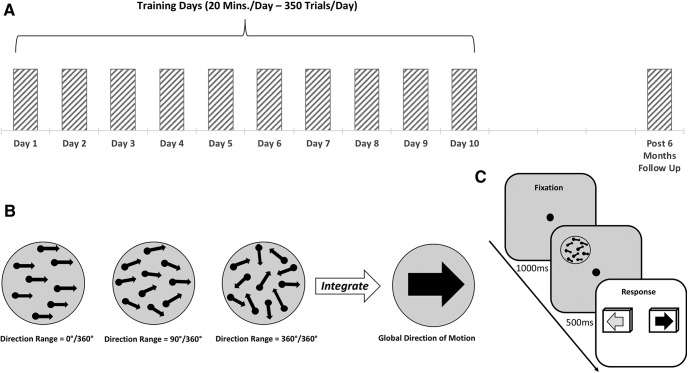Figure 1.
Experimental procedure and behavioral task. A, All participants were tested on a motion integration task to determine baseline performance in the first session (day 1). They then underwent 9 d of training with or without on-line brain stimulation (days 2–10). Behavioral testing was performed again 6 months after the end of training/stimulation (post-6 month follow-up). B, Example of stimuli with different direction ranges (0°, 90°, and 360°) used for the motion integration task; target dots were embedded in noise dots that are not shown in the figure for clarity purposes (for details, see Materials and Methods). NDR = 0 (for details, see text) indicates fully random motion directions (360° range), while NDR = 100 indicates all signal dots moving in one direction (0° range). A two-alternative forced-choice, adaptive staircase procedure was used to estimate the largest range of dot directions that subjects could correctly integrate to discriminate the global motion direction (leftward vs rightward). C, Trial sequence used for training and to measure left–right motion discrimination thresholds. First, subjects were asked to fixate the central cross for 1000 ms, immediately followed by a tone signaling the appearance of the stimulus, which was presented for 500 ms. Subjects had to indicate the perceived global motion direction by pressing the left or right arrow key on the keyboard.

